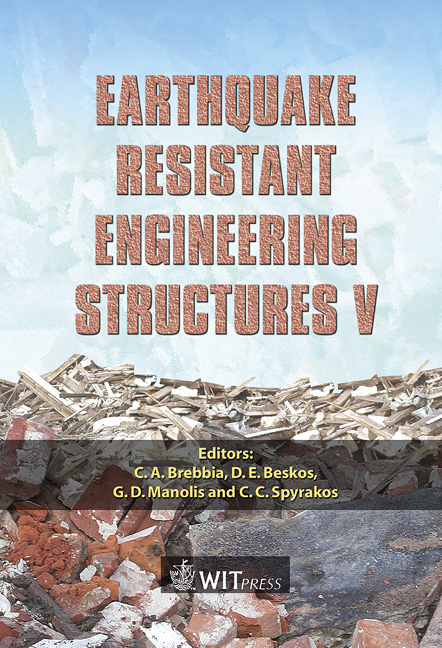The Seismic Energy Dissipation Mechanism Of Rocking Structural Systems With Yielding Base Plates
Price
Free (open access)
Transaction
Volume
81
Pages
12
Published
2005
Size
566 kb
Paper DOI
10.2495/ERES050331
Copyright
WIT Press
Author(s)
T. Azuhata, M. Midorikawa & T. Ishihara
Abstract
The energy dissipation mechanism of the rocking structural system with yielding base plates is investigated based on seismic response analyses of four steel planar flame models with five stories and one bay. The potential energy of the self weight increasing with uplifting and the hysteresis damping capacity of the yielding base plates are evaluated. Effects of vertical inertia force on the energy dissipation mechanism including impact effects are clarified. The energy dissipation of the system corresponding to the maximum momentary input energy is expressed using the maximum rigid body rotational angle. The maximum response displacements are predicted considering the energy balance condition of the system. Keywords: uplift, rocking, base plate yielding, energy dissipation mechanism, momentary input energy, response displacement prediction. 1 Introduction It has been pointed out that the effects of rocking vibration (up-lift response) reduce seismic damage of buildings subjected to strong earthquake ground motions [for example, 1-4]. Based on this knowledge, we are now developing the rocking structural systems with yielding base plates (BPY systems) [5-7]. These systems can cause rocking vibration, when the base plate attached at the bottom of each column on their first story yields. The basic idea of the systems is illustrated in fig. 1. According to our previous studies based on shaking table tests, it was cleared the BPY systems can effectively reduce seismic responses of buildings. And we proposed a simplified prediction method for seismic
Keywords
uplift, rocking, base plate yielding, energy dissipation mechanism, momentary input energy, response displacement prediction.





